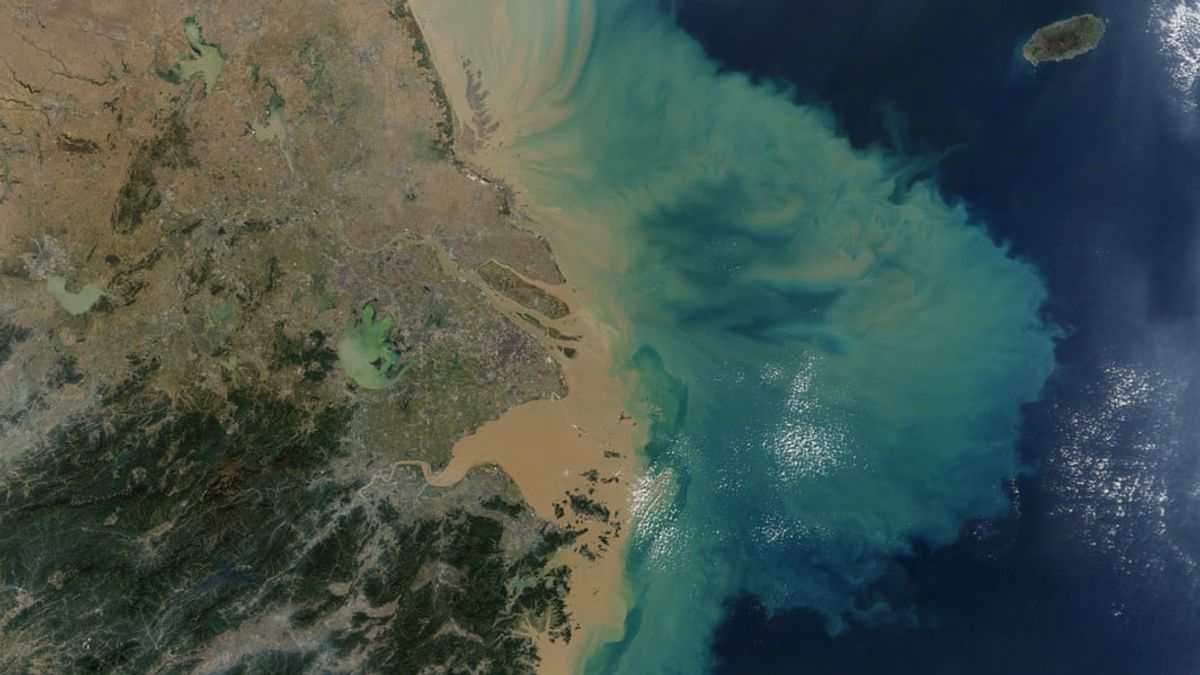JAKARTA - The sea surface temperature in the world continues to warm, the highest peak occurred at the end of 2019. Some groups argue that global warming is something that cannot be denied.
The rise in sea surface temperatures is due to extreme climate change. 90 percent of them are due to the greenhouse effect caused by burning fuel, forest fires for new land clearing, and other human activities.
Quoted from The Guardian, a new analysis shows that in the last 10 years, sea surface temperatures in the world have begun to warm. In fact, the recorded average sea surface temperature is equivalent to the use of 100 microwaves that everyone on earth uses throughout the night.
Rising sea surface temperatures can disrupt the water cycle, which means more flooding, or rainstorms. This is due to changes in sea water temperature which is increasing, if it continues, it can also endanger the marine ecosystem.
"We found that 2019 was not only the warmest year on record, but represented the biggest one-year increase in an entire decade, a serious reminder that human-caused global warming on our planet is continuing," said Prof. John Abraham at the University of St Thomas. Guardian.
Another analysis, published in the journal Advances In Atmospheric Sciences, shows that most changes in sea surface temperature occur in open water. The results show an increase in heat temperatures when greenhouse gases accumulate in the atmosphere.
Heat from greenhouse gases from 1987 to 2019 was four and a half times as fast as from 1955 to 1986. Most of the oceans showed an increase in heat in the 1987-2019 period.
Hot sea surface temperatures can trigger more extreme climate change. Warming oceans can also trigger the melting of ice in the Antarctic region, which can cause an increase in the volume of sea water.
The data also shows that the past 10 years show the highest sea level, measured from records dating back to 1900. Scientists estimate that about one meter of sea level rise by the end of this century, is enough to displace 150 million people worldwide.
"For me, the message that can be taken is that the hot temperature of seawater, particularly down to 300 meters, is increasing rapidly and will continue to increase as the oceans absorb more heat from the atmosphere," said Dan Smale of the Association for Marine Biology in the UK.
"The top layers of the ocean are very important to marine biodiversity, because they support some of the most productive and rich ecosystems on Earth, and a warming of this magnitude will dramatically impact marine life," added Smale.
Warming seawater is proof that the Earth is not doing well. It is better for humans to protect nature and minimize the effects of global warming. This can be done with the simplest things such as recycling waste, planting trees, and saving electricity in the use of energy.
The English, Chinese, Japanese, Arabic, and French versions are automatically generated by the AI. So there may still be inaccuracies in translating, please always see Indonesian as our main language. (system supported by DigitalSiber.id)








